Crocodiles fly, but low-low (about ekranoplanes without emotions, but with digressions)
I’ll say right away: nothing about “having no analogues”, “thoughtlessly destroyed”, etc. - will not be.
What will happen:
So from

before
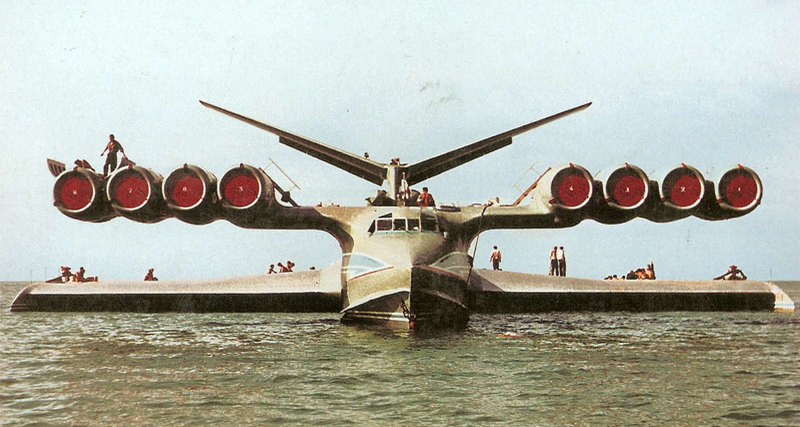
First, for a warm-up and introduction, we jump a little.
To avoid confusion with airbags, I will add a few words about them. An air cushion differs from flying on a screen, and especially an airplane, in that the pressure under the bottom is considered uniform . Important property! Due to this, hovercraft can move over land, ice, waves, and land.
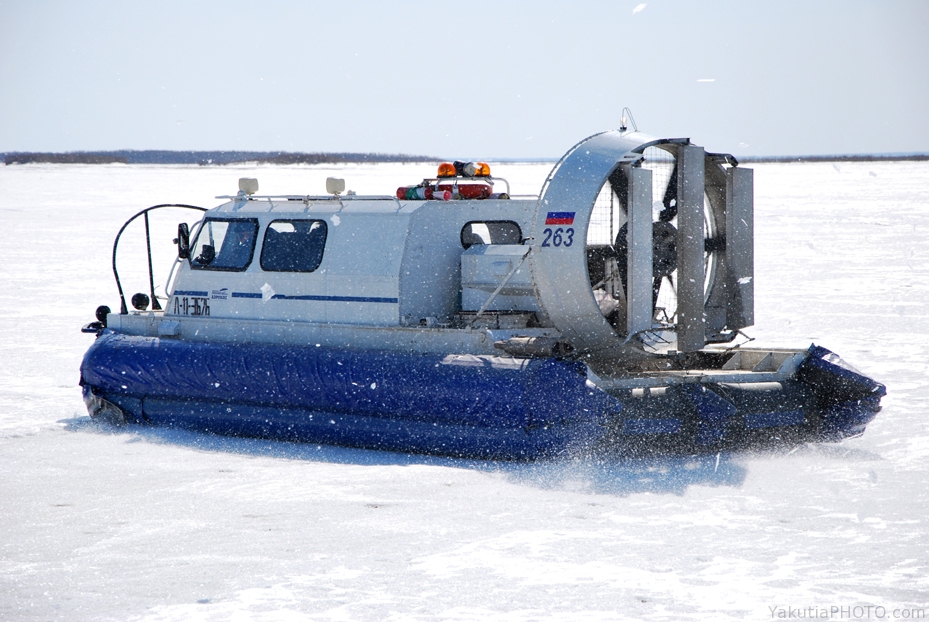
This justifies their military airborne and transport use, despite the high cost of operation.
However, pillows are different, at least of three types:
Discussions about ekranoplanes cannot be carried out without comparison with airplanes, therefore the smallest of the features of an airplane’s flight. There will be no science, not even Bernoulli's law, mentioned by everyone in vain. Just a couple of simple, even simplest and most obvious principles, leading to differences between aircraft and ekranoplanes.
The history of the screen is as old as airplanes in general. Repeatedly observed, especially on the first monoplanes, that the aircraft "does not want to land" when landing. Despite the decrease in engine power, the aircraft did not lose altitude - and then, after a large loss of speed, it fell from a height to a strip. Although the height was small, but the strength was small - everything broke and even the pilots died. In addition to just falling, there were effects of a sharp bulging nose and falling on the wing, which added unpleasant consequences. At first, there were so many problems in aviation that this was just one of many. She was noted, but before the thorough analysis of the reasons “the hands didn’t reach”, especially since when the planes became heavier, with more load on the wing and more speed - the effect decreased.

A little later, on heavy hydroplanes, which accelerated for a very long time and low, they noticed the benefit of flying at low altitude. The twelve-engine Dornier Do X, whose wing had a significant chord, consumed significantly less fuel in this mode.
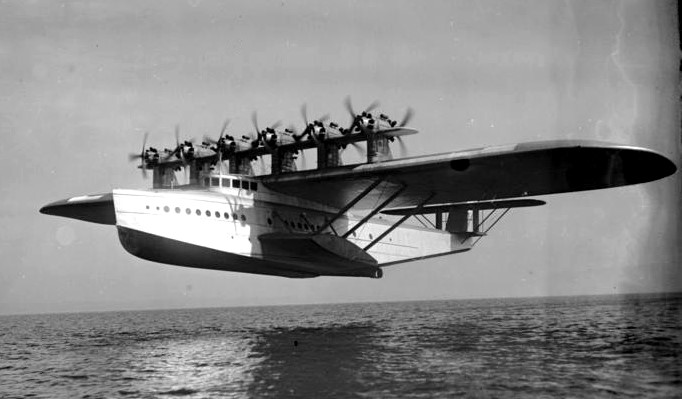
The time has come to finally understand what is the matter. Our first was the famous B.N. Yuriev and his work “The influence of the earth on the aerodynamic properties of a wing”. We were engaged, of course, and abroad, first of all, Lippisch should be noted.
To understand us, we touch the theory.
Sound, by definition, is a pressure wave in air, the speed of sound is the speed of pressure propagation in air. Under the wing, the pressure rises and the pressure rises, just like a normal sound, reflected from the surface. If the wing is wide enough, and the speed is low, then the reflected pressure wave enters the wing and further increases the pressure under it. At very low altitudes and speeds, this can happen even repeatedly.
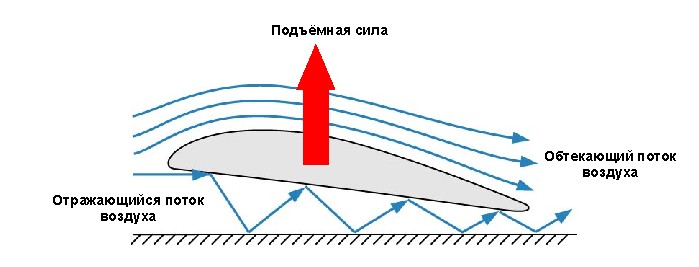
To have time to get into the wing, the wave must have time to fly two heights, while the wing flies its width. Moving from the verbal description to the formula, we get:
2 * H / Vsv <L / V , where
H - flight altitude, Vzv - speed of sound,
L - wing width (chord), V - flight speed.
The formula, as you see, is simple and even trivial. But it is from it that practically everything that can be said about ekranoplanes follows.
The corollary is obvious: the energy that flies mediocre from the wing of an airplane to infinity returns to the good of the cause.
Since the reflected pressure wave arrives at the rear of the wing, the centerpiece moves backward relative to the “airplane” position. And it’s not just shifting, but walking, depending on the speed and height above the surface. The faster and higher the flight, the lower the increase in pressure and the greater the displacement of the CP in the rear. Since the center of mass remains in place, the displacement of the CP and the change in the magnitude of the force create inclining moments. Both longitudinal (diving, cabrioled), and transverse, heeling.
But this is not so bad: the flight on the screen is self-sustaining in height. Climbed higher - the lifting force decreased and the dive moment increased. The device sags, returned to a predetermined height - the lifting force has increased, the diving moment has returned to its original state ... we are flying!
It is only necessary to maintain the desired speed.
But every stick has two ends, and besides this pleasant pair of consequences there are others that are not so joyful.
This is true for any naturally resilient systems. In this case, let's look again: rose high, the lifting force fell, a diving moment appeared. Going down? Yes, but at the same time we are gaining vertical speed, but there is no way to extinguish it.
The opposite case: the height is small, the diving moment decreases, the lifting force grows, the apparatus rises. Good? Not always, because the device loses speed in the “nose up” position. This, by the way, is one of the most common types of ekranoplanes accidents:
Draw an ekranoplane above the transverse wave:

Obviously, such a redistribution of pressure will lead to a roll. More precisely, since the ekranoplan flew a wave quickly - to an alternating roll, transverse shaking. Or diagonal. Or longitudinal, depending on the direction of the wave. The same thing will happen when flying over any obstacle, and therefore do not fly over land in screen mode at all.
No matter how spacious the atmosphere, but have to turn.
The airplane has the correct cornering behavior: the speed of the outer wing is higher, the lifting force is also higher, and the plane gently heels inward, turning itself into a motorcycle.
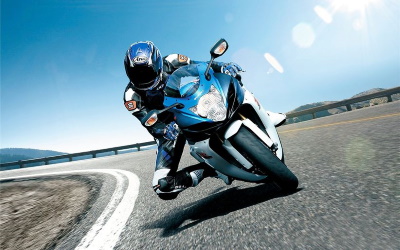
Even better, the driver tilts the motorcycle, and the plane heels properly. Gliding is reduced, turning steeper and safer. Yes, and passengers, of course, more pleasant.
But the ekranoplan, as we recall, an increase in speed leads to a loss of lift. As a result, he heels outward, out of the bend.
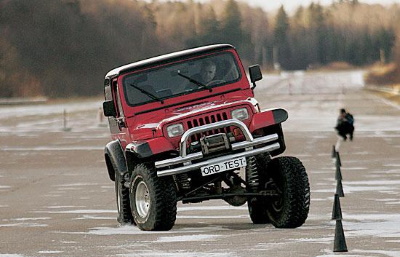
And out of nowhere, the wing will touch the water! In order not to lose height in a turn, unlike an airplane, an ekranoplan needs to slow down. But turning itself requires energy consumption, and it is doubly unprofitable to slow down. As a result, turns are made with huge radii, “pancake”. In other words, ekranoplanes maneuverability is disgusting.
In real life, on winds, waves, obstacles, the CD walks along the wing in all directions unpredictably for the pilot. Variable (and even alternating) multidirectional loads are created in the design, which quickly wears out.
As you can see, the alluring effect of the screen is dangerous for piloting and disastrous for the design. But, since there are problems, there are methods for solving them. Let's talk about different schemes of ekranoplanes, what they are and why.
Is automatic stability dangerous? Yes, moreover, any excessive stability is dangerous.
Reduce.
Firstly, we make the “reverse V” wing , that is, lower its ends down.
Additional benefit: since the ekranoplane flies above water, we will put floats at the lowered ends.
Secondly, sweep affects stability:
To further reduce excessive stability, we sweep backward .
Thirdly, to reduce the throwing of the CD along the wing in rolls (and when flying over irregularities), we will reduce the role of the outer part of the wing, we make a large narrowing , almost a triangular wing.
And finally: the speed is small, the wing is triangular - you can use a very large angle of attack . It will not just make flying easier. The trailing edge practically falls on the water, preventing the air from escaping, and during acceleration a dynamic air cushion is obtained to assist the ascent.

Lippisch, a German aircraft designer, having worked after the war on the American fighter program, took up ekranoplanes. As a specialist in triangular wings, he naturally came to this scheme, releasing the famous X-112 in 1963:
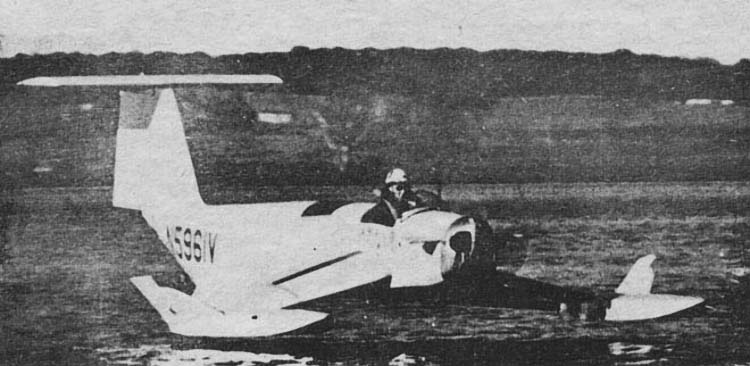
Later, the engine moved to a more convenient place, it turned out X-113
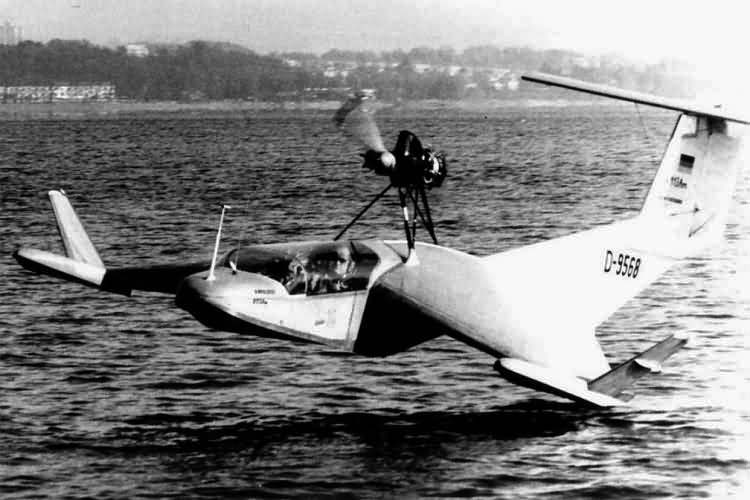
- and popularity has come.

To summarize: we got a very safe low-speed car for pokatushek. Slow, 60 km / h, at a limit of 120. The main advantage in the ability to fly very safely together on an engine 25ls. Cheap engine, cheap design. Own mass of the device is less than 200 kg - and this is the cost.
X-113 variants still have enthusiasts, although the accessibility of more decent engines and high-quality materials has affected their quantity badly. Light aircraft became available to many, and this is a completely different league.
The scheme does not actually scale; with increasing speed, the decisions made turn into their opposites.
Note that the commonly referred to super advantages in the form of increased carrying capacity and range are out of the question. The range parameters for these ekranoplanes are practically not indicated, why is it in pokatushki?
The path can be called a force: for each specific problem, a specific force decision is made.
I think the written sounds rude and insulting, as if invented badly. But no, it’s thought up just fine, you need to understand why. Design Bureau of Rostislav Alekseev did not make a car for tourists, but for the military, they are of little interest to cheap safe pokatushki.
Work on military ekranoplanes began approximately at the same time as the work of Lippisch, in the early 1960s. The main advantage was the ultra-low altitude, hiding the device from enemy radars and too high speed for surface and submarine ships to prevent them from completing the mission.
The aforementioned direct decisions were made not from the floundering bay, but after studying various options:
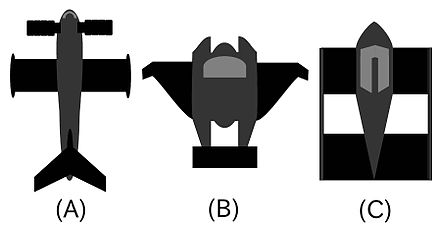
First, the “C” circuit was tested, a tandem with two wings. The advantages are obvious, you can fly steadily without large losses. But all the same sharp changes in lifting force showed the unreliability of stabilization. In addition, the influence of disturbances from the front wing to the rear wing turned out to be too large.
Scheme "B" (Lippisch) is not suitable for large and fast devices. And the work focused on option "A", the classic scheme with a direct wing, stabilizer and accelerating engines.
The first experimental was SM-1:
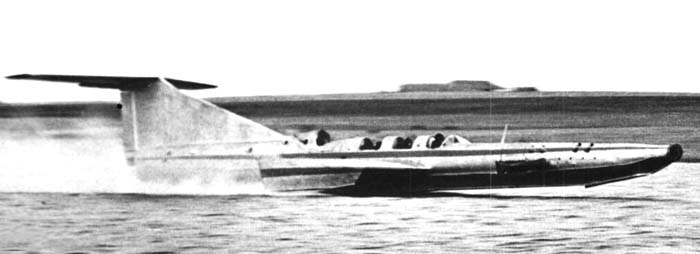
Then there was SM-2, the go-ahead was received and the development of immediately the largest, one might say, huge, KM was started:
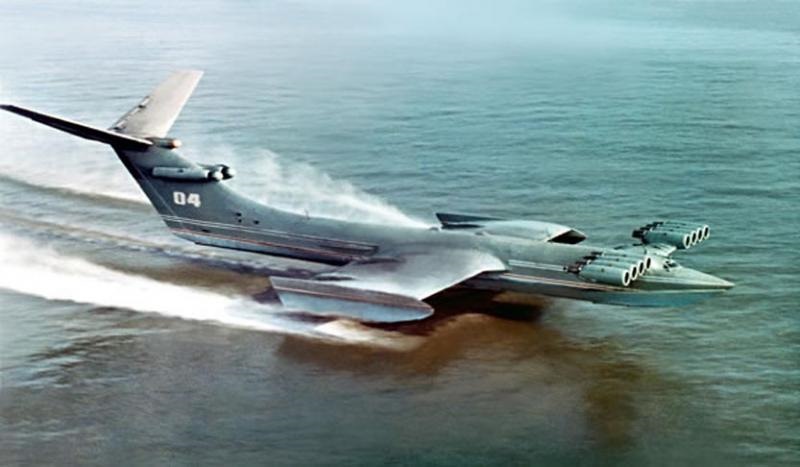
No wonder he got the nickname "Caspian Monster." The size was not so random: it was necessary to fly over the sea. There are waves at sea, and there are high ones. Okay shaking, you can just fly into the wave! So you need to fly high. But I also want to quickly, but the car is military.
But the higher and faster we fly, the weaker the screen until it disappears. It remains to make the wing wider, which means that the entire apparatus is larger. The take-off mass reached 544 tons, only Mriya took off much later in greater weight.
Having become huge, KM got the problem of large seaplanes: it’s hard to break away from the water, it holds. Moreover, the wing for such an apparatus is small. That is why a whole engine battery appeared in the nose. They do not just turn on at take-off, their jets are directed downward, under the wing, creating a dynamic pillow during acceleration and separation from water.
In flight, the accelerating engines are turned off, the main engine remains in the tail.
It was supposed to be an incredible missile carrier, invisible to radar, very fast for the sea and with a large supply of missiles in comparison with aircraft.
A good option to deal with aircraft carriers? Alas, too huge, too dependent on the weather. In addition, the flight range was surprisingly small. However, the KM was a huge but experienced machine with natural flaws. Further steps were needed.
After optimizing for most parameters, it was possible to make a classically beautiful, much more economical “Eaglet”. Appointment - fast transportation of landings.
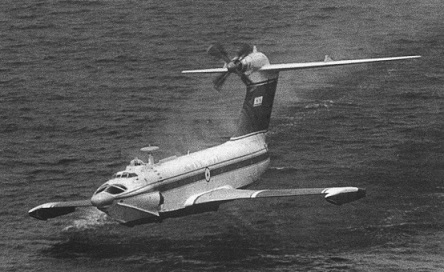
He is so beautiful that I will not deny myself the pleasure of showing a diagram:
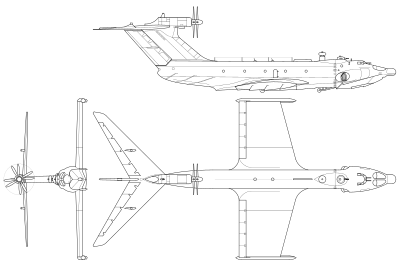
The main engine became turboprop, which corresponded much better to flight speed and was more economical. Accelerating motors hid in the nose fairing, and all the contours became more aerodynamic.
The car turned out to be more successful, it went to the series, the 11th separate air group was formed:
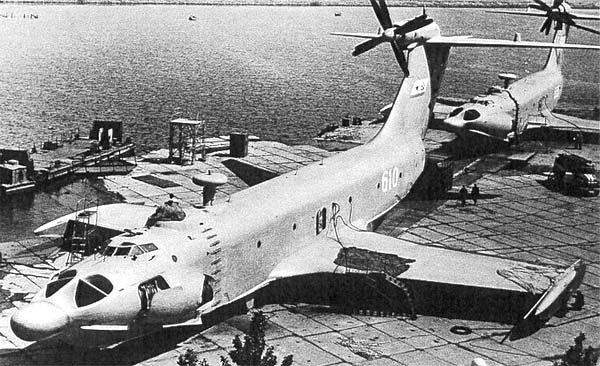
In parallel, a new version of the KM was created, a missile carrier called "Lun":
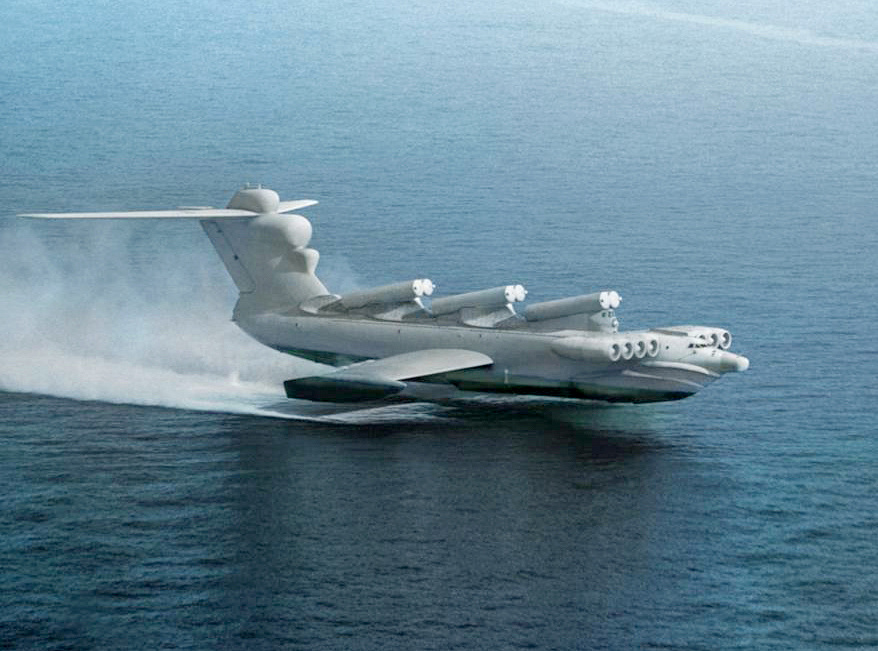
But the matter did not go beyond the scope of tests and experiments, with the expansion of flights almost all problems of ekranoplanes came to light. The case lasted until the 90s and relatively quietly came to naught. In this way, despite the groans of fans and conspiracy theorists, simply no advantages were discovered and multiple shortcomings were discovered. No matter how you try, no matter how you make a technically perfect machine - the principle itself has summed up.
Finally, radar crosses were put up on military ekranoplans. Cruise missiles appeared, new dangerous targets, and locators capable of tracking them appeared. The ekranoplanes immediately ceased to be something secretive. The speed and range of the missiles made the speed and range of the ekranoplanes unnecessary. Landing craft also cannot land an ekranoplane on an arbitrary shore; beaches all over the world are suitable for this once, twice, and miscalculated.
So the military idea came to naught.
And yet, let's talk about exploitation. Alas, nothing encouraging was found there either:
Does the screen double the aerodynamic quality? But in practice, huge stabilization losses eat up everything. Do not believe?Look above at the "Eaglet" pattern or here at the "Moon" pattern: the stabilizer is comparable in size to the entire wing. And after all, besides the resistance itself, he presses down, spending the very same lifting force for which everything was started.

Compare with the An-12 circuit, what is its stabilizer compared to the wing:

You can, and very briefly: compare the "Eaglet" with the An-12 (which is 25 years older and certainly not more advanced technologically or based on materials). The transported cargo is the same, but the An-12 is faster, three times lighter and many times more economical. The reason also lies in the fact that the plane rises to where the density (and resistance) of air is lower, and the ekranoplan plows the densest part of the atmosphere.
As you can see, the use of the screen does not bring any real benefits. And that, alas, is not all.
WIG - a very heavy vehicle. The requirements for the strength of the casing in terms of landing on water are high. The structural strength requirements due to the constantly moving CD are high. It turns out shipboard strength requirements for aviation requirements for technology and materials. Very, very expensive.
In addition to the actual design, the engines also weigh. Accelerators must be "carried free" the entire flight. It is necessary to maintain, replace, repair. Engines are generally the most expensive part of the aircraft; in the case of ekranoplanes, the problem only worsens.
The ekranoplane flies low, and this is dust near the earth and water above the sea. Engine wear is accelerated many, many times. In winter, icing will be simply murderous, marine:
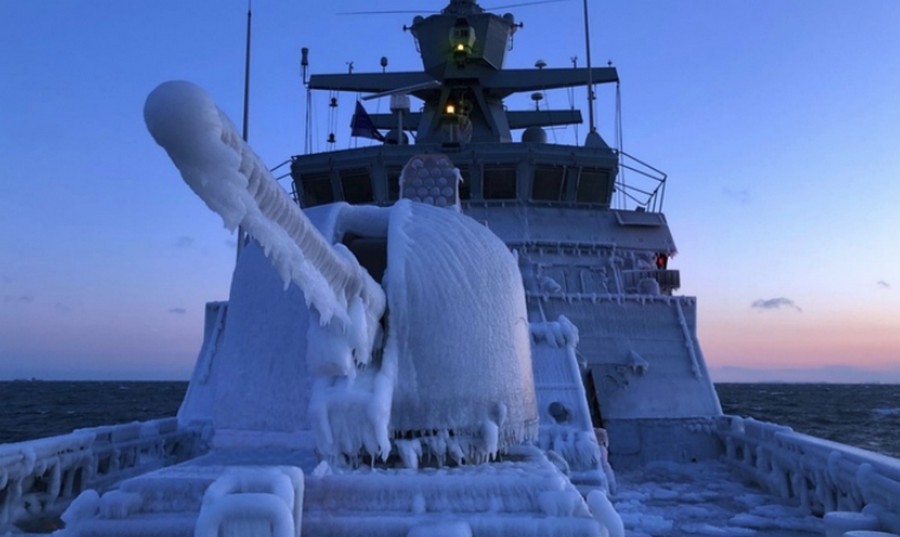
The flight height of the ekranoplanes coincides with the flight height of the birds.

Even the military needs to take care of the engine, you see - they put protective nets:
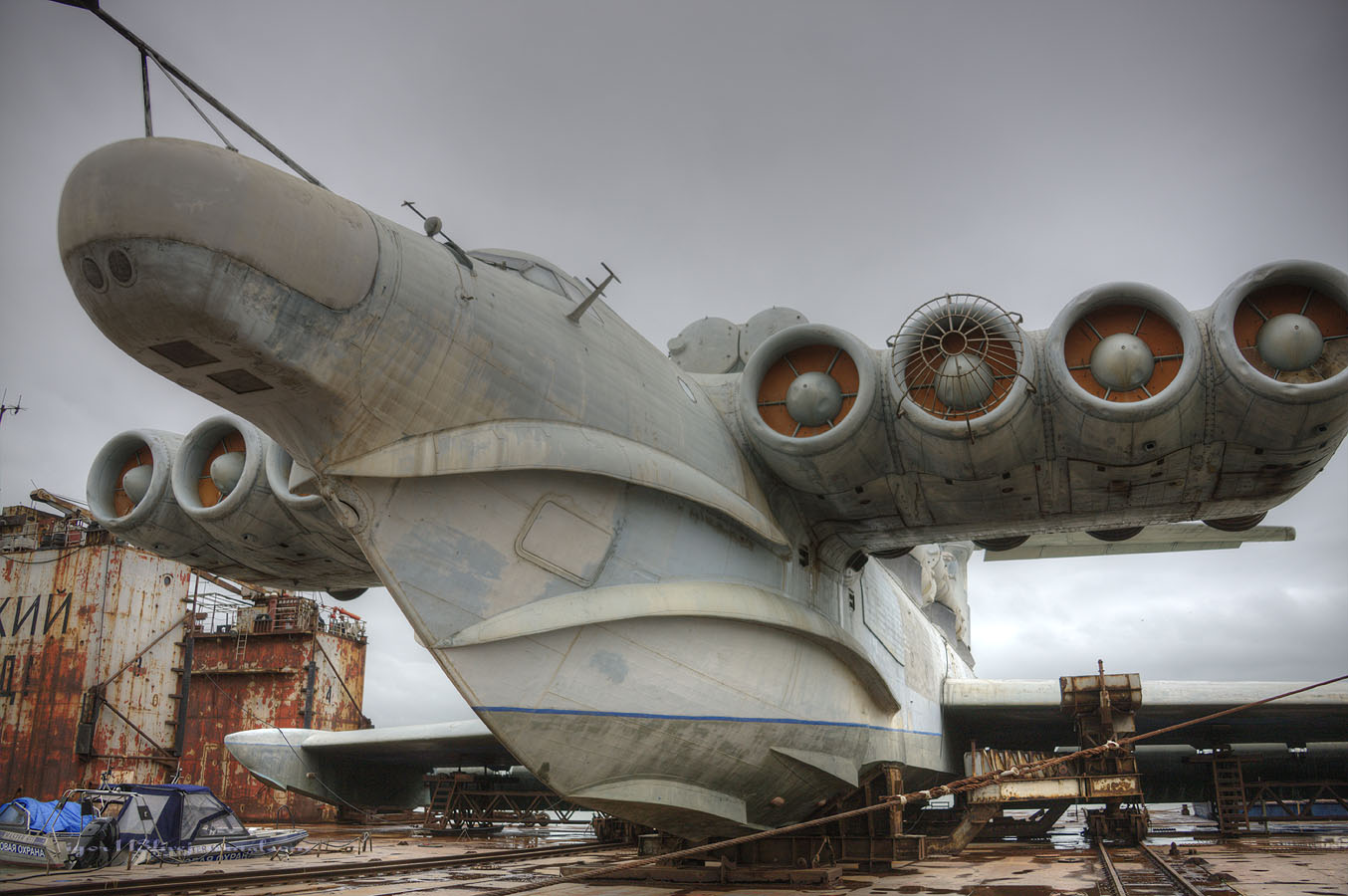
But for civilian cars this solution is not acceptable, the recent story with gulls in Zhukovsky is indicative.
River ekranoplanes also have problems: the rest of the participants in the movement are much slower, but it will not work to dodge them or fly safely. Hydrofoil vessels have a similar problem, but they are still much better managed.
Nevertheless, the idea of ekranoplanes continues to excite the minds, and there are many attempts to revive it. In anticipation of the war in Iraq, they considered the Pelican ocean-based ekranoplan project :
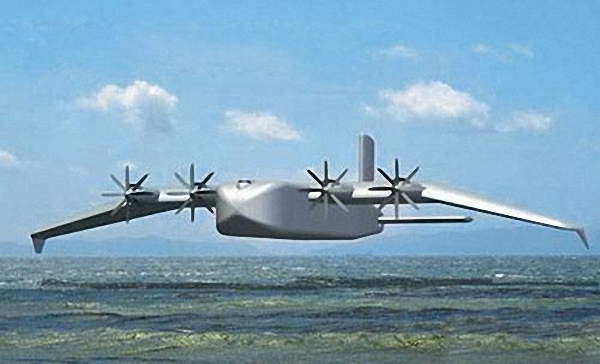
It is easy to see that this is not an ekranoplan according to the scheme, but it doesn’t look like an effective aircraft either. It is difficult to say how much the project has worked in Boeing, but apart from the hippo giraffe, I will not name it. Maybe they hoped that the size (take-off weight of up to 1,500 tons) would help to escape from problems, but ... I do not believe it.
Quite a lot of attempts have been made and continue with us. There are three directions:
“Big Lippies” or hybrids according to the aerodynamic scheme, for example, S-90:
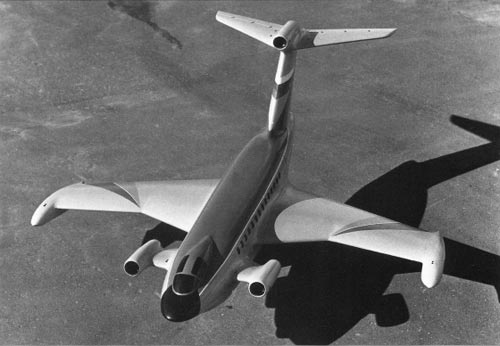
The point is to get away from very large losses in a very straightforward Alekseev scheme. But the whole appearance shows high speed, and what then is a screen without huge sizes? The sketch remained a sketch.
“Little Alekseevs”
“Aquaglide 2” (photo by Stefan Richter)
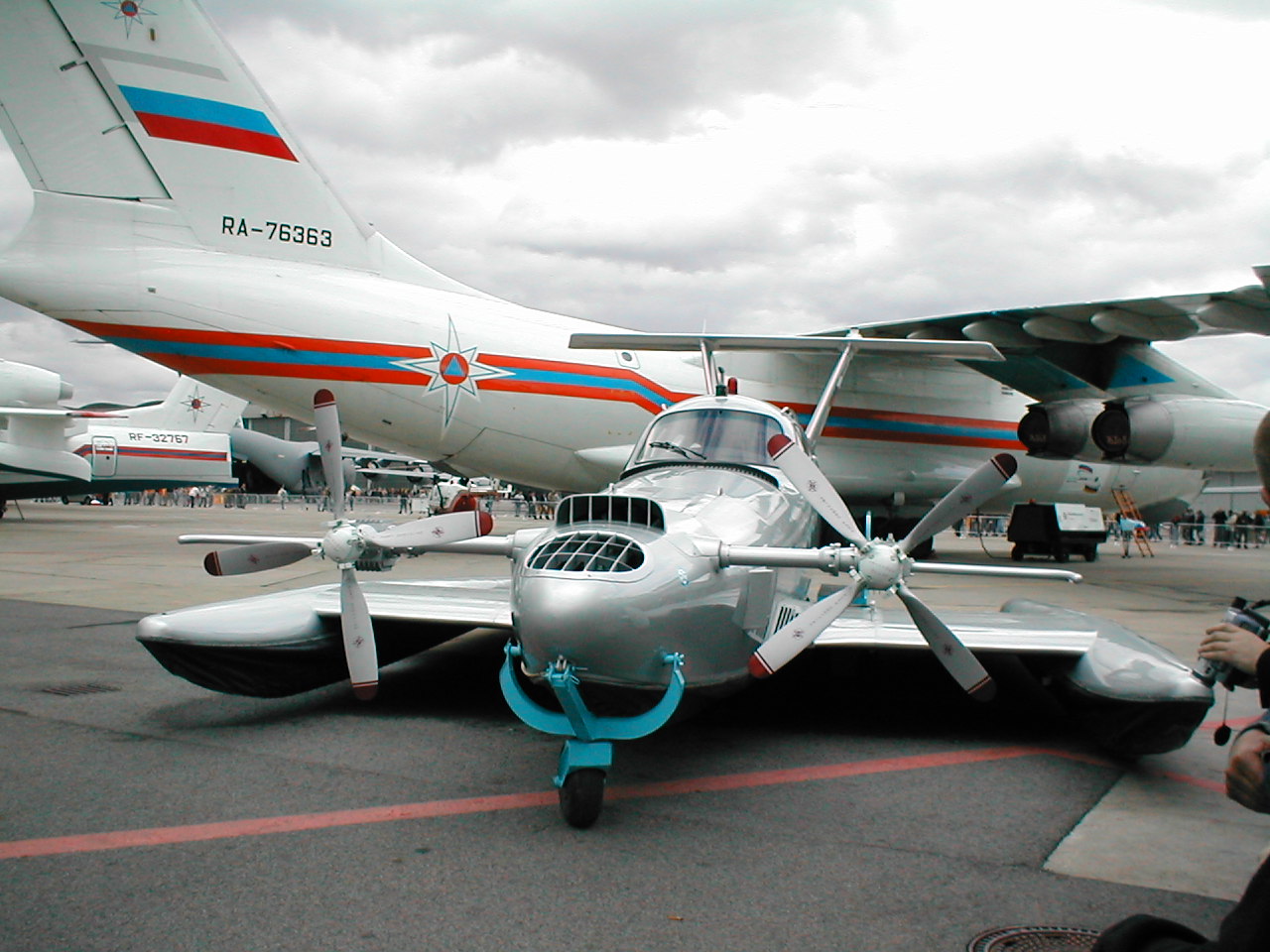
Here you can see, rather, the hope of ease of development, without aerodynamic frills. Although the idea of blowing under the wing at take-off is realized through rotary screws - this is not about simplicity.
Since the need for stabilization, including the transverse one, is only exacerbating in a small amount, I would not dare to ride Aquaglide.
Ekranoleta
Once the problems are on the screen - why not fly away from them higher? Indeed, even the heavy classics of Alekseev were able to rise to a height of two (!) Kilometers. Of course, with such a wing and mass it was a one-time jump, no flight of fuel would be enough to fly.
But it’s tempting, after all ... maybe to add an airplane wing? Even in screen mode, the aircraft wing behaves more stable, and when jumping over obstacles it will help at all.
It turned out, as in the German phrase with the word nicht at the end:
But the opportunity to beat out a grant for a beautiful idea, and even a little more volatilely named one, is captivating, it’s easy to find examples:
Project S-90-200:
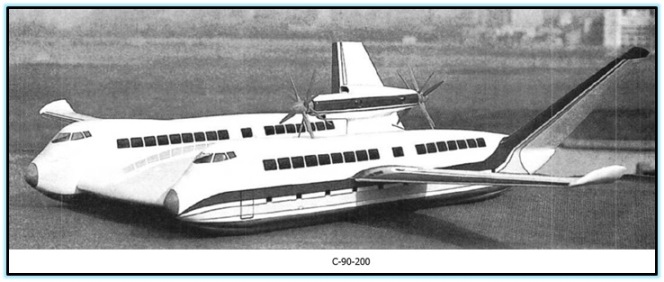
“Oriole EK-12P”:

They are built and even fly:
Let's look at VVA-14, the Oriole, the EKIP, the Oriole, and the same Pelican - the same thing, an airplane wing.
Accidents and disasters in aviation, alas, is not news. But the development lies in the fact that the reasons for them are eliminated. In the case of ekranoplanes, alas, everything remains. The problems and dangers common to all ekranoplanes have not disappeared, it is worth blowing the wind, and:
Nothing exceptional - it is the classical behavior of the ekranoplan that is available. Similar problems arose with SM-5, and with KM, and with Orlyonok :
I’ll mention a couple of legendary projects, which are talked about a lot, and which, fortunately for their creators, were not completed:
RL Bartini, “VVA-14” (photo by User: Jno - Open Museum):
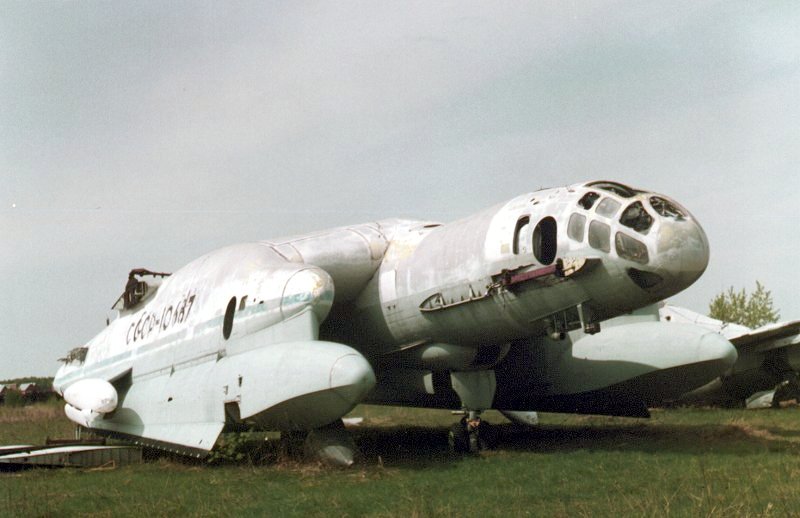
A very romantic, very popular and very adventurous aircraft designer Bartini tried to make a super improbable device right away. It was supposed to be a high-speed plane with a screen and also with vertical take-off. Based on the known experience of vertically flying planes, the project isdelusional, initially a failure. However, Bartini did not have any successful projects at all (they mention Yer-2, but his progress towards success was precisely the rejection of the Bartini design). It’s a pity - as a child, I read the book “Red Airplanes” about him and for a long time I was a fan of Bartini.
Schukin, “EKIP” (photo by the EKIP concern):

There is no vertical take-off, but the disk flying wing has been piled up in heaps, and its enormous size (without providing screen specifics), border layer management (as if this automatically eliminates stability problems. It didn’t save anyone, but here it will be, yeah).
Technically, discussing this is generally impossible.
Literally all the demonstrated projects do not solve anything, stupidly parasitizing on the old idea.
But the situation can be improved. The ekranoplan’s problem of stability means that computer stability is needed. This gives aircraft significant, ten percent, savings, and it can simply save an ekranoplan. Not only will the dangers be eliminated, stabilization costs will fall at times.
Yes, it will be a high-tech and expensive device, but it will be able to fly. If you also apply the electric or hybrid scheme of the propulsion system, it may be possible to solve the corrosion problems. Although, of course, the erosion of propellers, birds, boats, and especially yachts with their high masts - will not go anywhere.
UPD:
I missed to describe a niche in which the ekranoplan could be very successful. Of course, subject to a high-quality apparatus made of composites (corrosion, weight) with computer resistance (safety, efficiency).
This niche is Southeast Asia, including Japan. There is a lot of sea, the distances between the islands are small, so the plane barely manages to rise to the train, as it is time to descend. Large passenger flows (the size for the ekranoplan is good, you can fly higher and faster).
But alas, this niche is purely theoretical and, I am afraid, will never open.
Firstly, there is no desired ekranoplan, not even a movement in this direction is visible. And it will not be, because such a development is very expensive and hardly anyone can do it for a niche.
Secondly, even if the planes are not ideal for these conditions, but they are there, there is all the infrastructure, everything is massive and therefore extremely inexpensive. To occupy a niche, you need not just to occupy it, but to squeeze out an already working system from there. Which, of course, neither the "watermelons" nor the "bobiki" will do.
UPD:
Corrected the text in the spoiler about the nonlinearity of losses. I hope now it’s more correct and understandable.
What will happen:
- a bit of history;
- explanation of what the effect of the screen, its properties and consequences;
- Advantages and disadvantages;
- practical implementations here and abroad, different schemes and the reasons for their appearance;
- prospects as they seem to me.
So from

before

First, for a warm-up and introduction, we jump a little.
Wide jump
To avoid confusion with airbags, I will add a few words about them. An air cushion differs from flying on a screen, and especially an airplane, in that the pressure under the bottom is considered uniform . Important property! Due to this, hovercraft can move over land, ice, waves, and land.

This justifies their military airborne and transport use, despite the high cost of operation.
However, pillows are different, at least of three types:
Air grease
Air flows into a very thin layer under the bottom. Low consumption is ensured by a very small gap and a relatively low speed of movement. Very well suited for moving heavy loads on the smooth floor of workshops. We place these supports under the equipment, and they are air-lubricated to allow tens of tons to be rolled without problems:

But under the condition of a very smooth floor, because the height of the lift is about a millimeter. Therefore, for outdoor transport like this

even water is no longer suitable and all projects have not gone beyond the sketches.
Although there are examples. The glider "Zarya", as you can easily see, captures air under the bottom, which somewhat reduces resistance and gives the right to be called an air-lubricated device:
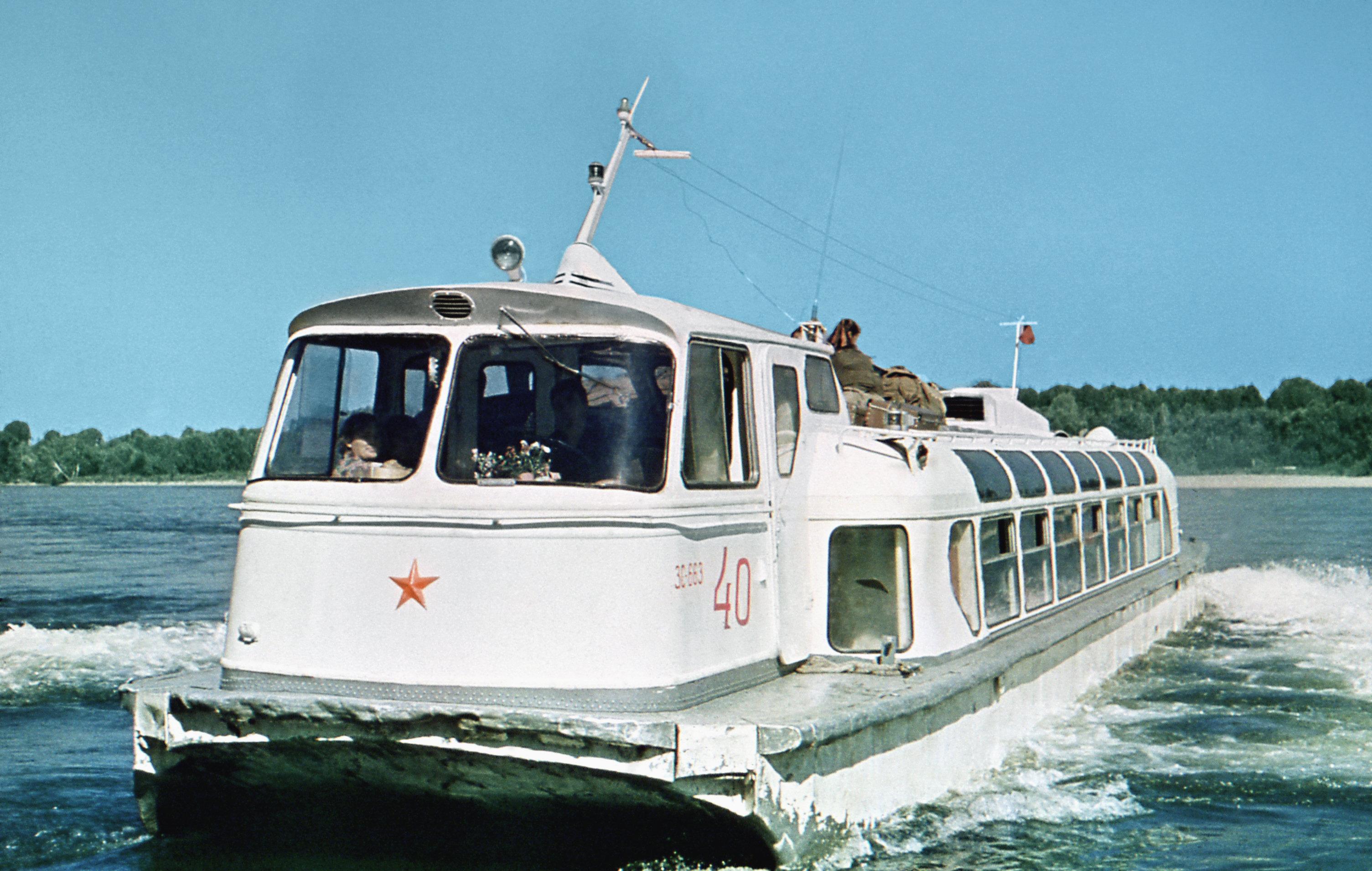

But under the condition of a very smooth floor, because the height of the lift is about a millimeter. Therefore, for outdoor transport like this

even water is no longer suitable and all projects have not gone beyond the sketches.
Although there are examples. The glider "Zarya", as you can easily see, captures air under the bottom, which somewhat reduces resistance and gives the right to be called an air-lubricated device:

Air bag
If you rise higher, so that you can not be afraid of bumps, you need to somehow block the gap formed in order to reduce air loss. A way out - to be blocked by a flexible skirt.
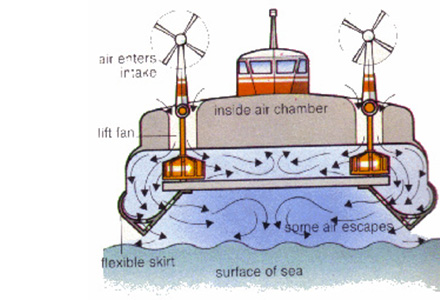
It glides low above the surface or even just on the surface, and bends over obstacles, while the position of the device as a whole remains unchanged.
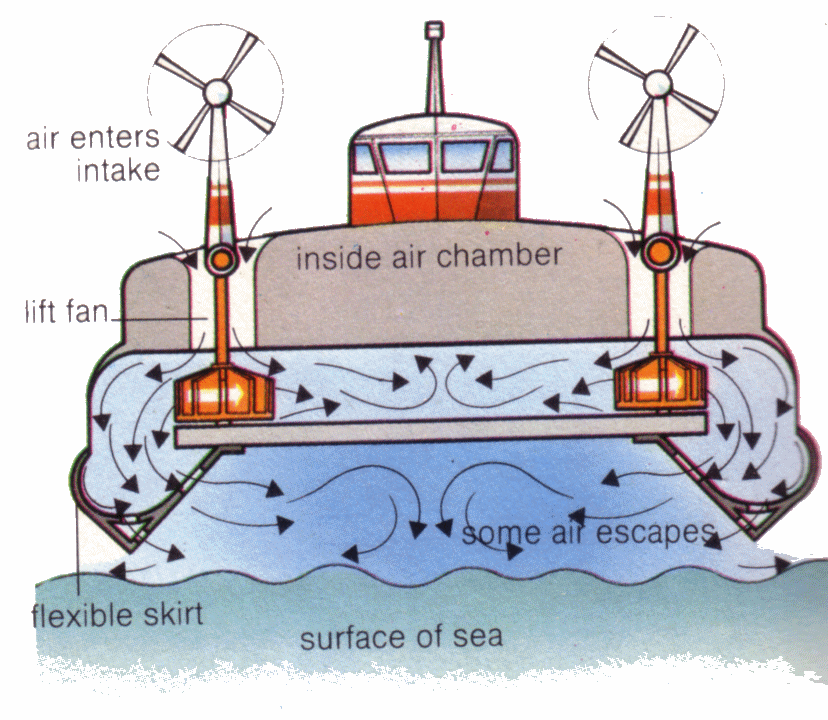
It is no accident that attempts to launch an air cushion into operation began a long time ago, for example, our torpedo boat L-5 dating back to 1936:

And the current severe "Murena-E":
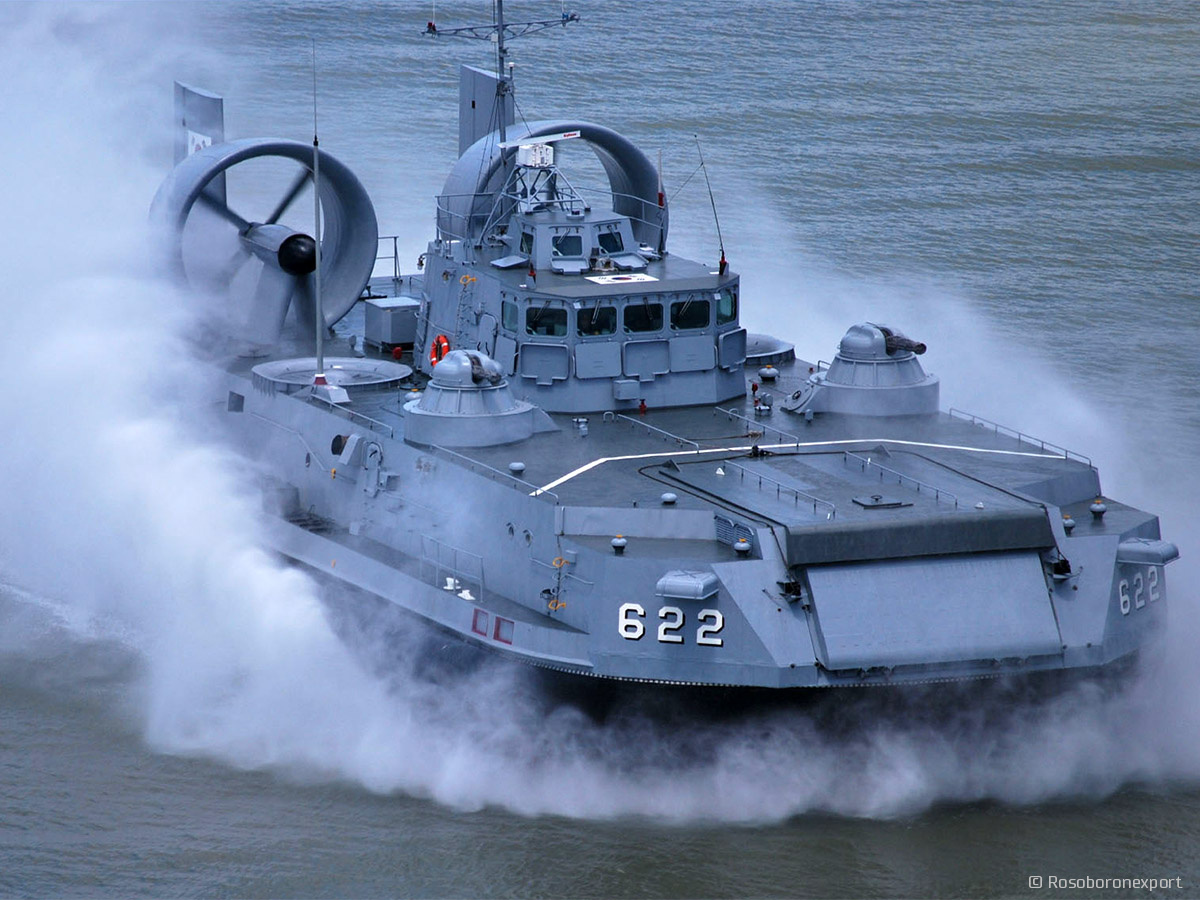
As well as peaceful ferries across the English Channel, SR.N4:
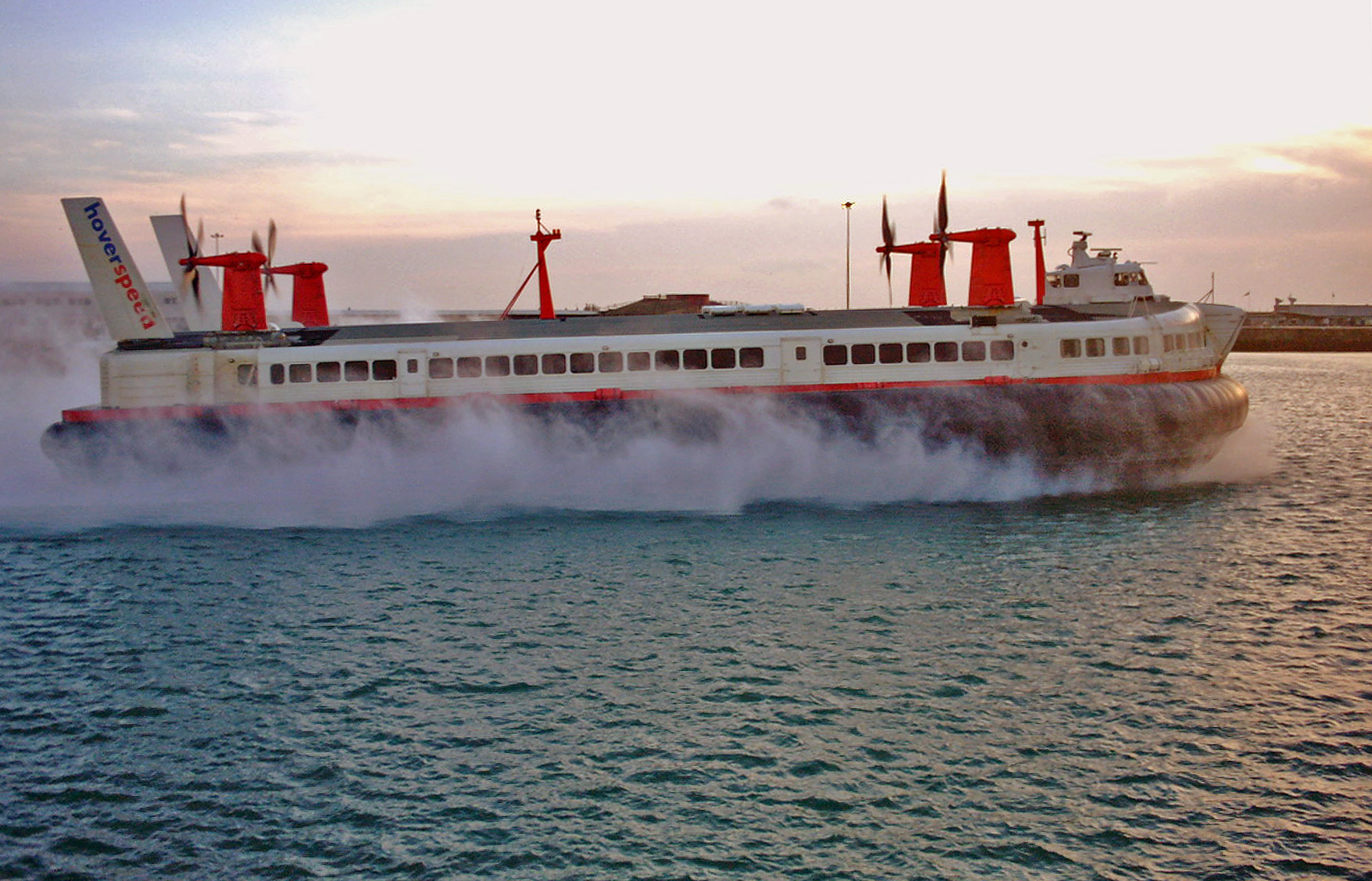
But to widely distribute such transport is difficult, because it is expensive. Fuel consumption for the compressor, quick wear of skirts ... On land, in general, there is little chance, you will quickly tear off the skirt. In difficult close conditions, there is not enough stability in motion. You can turn around on the spot, but at speed ... you know, you can only cling to the air.

It glides low above the surface or even just on the surface, and bends over obstacles, while the position of the device as a whole remains unchanged.

It is no accident that attempts to launch an air cushion into operation began a long time ago, for example, our torpedo boat L-5 dating back to 1936:

And the current severe "Murena-E":

As well as peaceful ferries across the English Channel, SR.N4:

But to widely distribute such transport is difficult, because it is expensive. Fuel consumption for the compressor, quick wear of skirts ... On land, in general, there is little chance, you will quickly tear off the skirt. In difficult close conditions, there is not enough stability in motion. You can turn around on the spot, but at speed ... you know, you can only cling to the air.
Dynamic air cushion
Since a compressor for an air cushion is expensive and eats a lot, but we fly fast anyway - why not take advantage of speed? Will the skirt rip off at speed? It doesn’t matter, we will make rigid sides, partially immerse them in water, at the same time we will get keels and stability of movement. The issue with the drive is also being solved: instead of noisy, bulky and insufficiently efficient propellers, a drive with water propellers or water cannons can be used. It remains to give such sides the name skegs and get a skegovy apparatus on a dynamic air cushion. In most cases, for the initial rise and obtain more stable parameters, a compressor is used, as in the Baikal "Barguzins":

Often, alas, the dynamic air cushion is confused with the screen effect. But aerodynamically, these are completely different things. A dynamic air cushion, like a “normal” one, has the same useful property: the pressure can be considered the same in different places. The ekranoplane is not at all like that, and the theoretical difference gives very serious differences in practice.

Often, alas, the dynamic air cushion is confused with the screen effect. But aerodynamically, these are completely different things. A dynamic air cushion, like a “normal” one, has the same useful property: the pressure can be considered the same in different places. The ekranoplane is not at all like that, and the theoretical difference gives very serious differences in practice.
High jump
Discussions about ekranoplanes cannot be carried out without comparison with airplanes, therefore the smallest of the features of an airplane’s flight. There will be no science, not even Bernoulli's law, mentioned by everyone in vain. Just a couple of simple, even simplest and most obvious principles, leading to differences between aircraft and ekranoplanes.
Losses are nonlinear
The law of nature, I’m not joking: with a double change in intensity, the loss is greater than with two single. Getting lift is a change, we will convert the flow resistance into lift.
To do this effectively, to get the greatest lift in exchange for the least resistance, you need to make many small changes in the flow, and not one large one (do not turn the flow through a large angle).
On the wing, ultimate efficiency is achieved at the leading edge, where we only slightly wrap a still fresh, innocent stream. Many, many small changes made at the leading edge of an extremely long and extremely narrow wing. They are striving for this, although the issues of strength interfere, first of all. For record gliders, for example, a wing is (Perian 2):

In general, the wing, of course, has a quite noticeable width. And the air pressure along this width is not evenly distributed. The farther from the leading edge, the more we turn the flow, higher losses and less lift. Therefore, the point of application of lifting force on the wing falls not in the middle, but in about a quarter to a third of the leading edge.

The point of application of aerodynamic forces is called the center of pressure. In the future, it will become clear that this is a very important, much defining concept for an ekranoplane, I will repeat it more than once, writing down for brevity as just a CD .
To do this effectively, to get the greatest lift in exchange for the least resistance, you need to make many small changes in the flow, and not one large one (do not turn the flow through a large angle).
On the wing, ultimate efficiency is achieved at the leading edge, where we only slightly wrap a still fresh, innocent stream. Many, many small changes made at the leading edge of an extremely long and extremely narrow wing. They are striving for this, although the issues of strength interfere, first of all. For record gliders, for example, a wing is (Perian 2):

In general, the wing, of course, has a quite noticeable width. And the air pressure along this width is not evenly distributed. The farther from the leading edge, the more we turn the flow, higher losses and less lift. Therefore, the point of application of lifting force on the wing falls not in the middle, but in about a quarter to a third of the leading edge.

The point of application of aerodynamic forces is called the center of pressure. In the future, it will become clear that this is a very important, much defining concept for an ekranoplane, I will repeat it more than once, writing down for brevity as just a CD .
Sticky air
No matter how the air at atmospheric pressure and low speeds resembles an ideal gas, there is still viscosity. The greater the pressure, the higher the loss in obtaining the same benefits. Designers of airplane wings have long found a way out, the wing profile is built so that the vast majority of the lifting force is given by the upper surface due to lower pressure there and, accordingly, lower losses.

In other words, the plane flies like this:

Only on the heaviest carriers do they increase the proportion of lift, organized by increasing pressure under the wing, but this is very far from what is happening under the wing of the winged craft.

In other words, the plane flies like this:

Only on the heaviest carriers do they increase the proportion of lift, organized by increasing pressure under the wing, but this is very far from what is happening under the wing of the winged craft.
Jumped to the screen effect
The history of the screen is as old as airplanes in general. Repeatedly observed, especially on the first monoplanes, that the aircraft "does not want to land" when landing. Despite the decrease in engine power, the aircraft did not lose altitude - and then, after a large loss of speed, it fell from a height to a strip. Although the height was small, but the strength was small - everything broke and even the pilots died. In addition to just falling, there were effects of a sharp bulging nose and falling on the wing, which added unpleasant consequences. At first, there were so many problems in aviation that this was just one of many. She was noted, but before the thorough analysis of the reasons “the hands didn’t reach”, especially since when the planes became heavier, with more load on the wing and more speed - the effect decreased.

A little later, on heavy hydroplanes, which accelerated for a very long time and low, they noticed the benefit of flying at low altitude. The twelve-engine Dornier Do X, whose wing had a significant chord, consumed significantly less fuel in this mode.

The time has come to finally understand what is the matter. Our first was the famous B.N. Yuriev and his work “The influence of the earth on the aerodynamic properties of a wing”. We were engaged, of course, and abroad, first of all, Lippisch should be noted.
To understand us, we touch the theory.
Theory
Sound, by definition, is a pressure wave in air, the speed of sound is the speed of pressure propagation in air. Under the wing, the pressure rises and the pressure rises, just like a normal sound, reflected from the surface. If the wing is wide enough, and the speed is low, then the reflected pressure wave enters the wing and further increases the pressure under it. At very low altitudes and speeds, this can happen even repeatedly.

To have time to get into the wing, the wave must have time to fly two heights, while the wing flies its width. Moving from the verbal description to the formula, we get:
2 * H / Vsv <L / V , where
H - flight altitude, Vzv - speed of sound,
L - wing width (chord), V - flight speed.
The formula, as you see, is simple and even trivial. But it is from it that practically everything that can be said about ekranoplanes follows.
The consequences
Up to two times higher aerodynamic quality
The corollary is obvious: the energy that flies mediocre from the wing of an airplane to infinity returns to the good of the cause.
Auto Stability
Since the reflected pressure wave arrives at the rear of the wing, the centerpiece moves backward relative to the “airplane” position. And it’s not just shifting, but walking, depending on the speed and height above the surface. The faster and higher the flight, the lower the increase in pressure and the greater the displacement of the CP in the rear. Since the center of mass remains in place, the displacement of the CP and the change in the magnitude of the force create inclining moments. Both longitudinal (diving, cabrioled), and transverse, heeling.
But this is not so bad: the flight on the screen is self-sustaining in height. Climbed higher - the lifting force decreased and the dive moment increased. The device sags, returned to a predetermined height - the lifting force has increased, the diving moment has returned to its original state ... we are flying!
It is only necessary to maintain the desired speed.
But every stick has two ends, and besides this pleasant pair of consequences there are others that are not so joyful.
Any automatic stability is dangerous when crossing borders
This is true for any naturally resilient systems. In this case, let's look again: rose high, the lifting force fell, a diving moment appeared. Going down? Yes, but at the same time we are gaining vertical speed, but there is no way to extinguish it.
The opposite case: the height is small, the diving moment decreases, the lifting force grows, the apparatus rises. Good? Not always, because the device loses speed in the “nose up” position. This, by the way, is one of the most common types of ekranoplanes accidents:
Span over obstacles - shaking
Draw an ekranoplane above the transverse wave:

Obviously, such a redistribution of pressure will lead to a roll. More precisely, since the ekranoplan flew a wave quickly - to an alternating roll, transverse shaking. Or diagonal. Or longitudinal, depending on the direction of the wave. The same thing will happen when flying over any obstacle, and therefore do not fly over land in screen mode at all.
Pancake Turns
No matter how spacious the atmosphere, but have to turn.
The airplane has the correct cornering behavior: the speed of the outer wing is higher, the lifting force is also higher, and the plane gently heels inward, turning itself into a motorcycle.

Even better, the driver tilts the motorcycle, and the plane heels properly. Gliding is reduced, turning steeper and safer. Yes, and passengers, of course, more pleasant.
But the ekranoplan, as we recall, an increase in speed leads to a loss of lift. As a result, he heels outward, out of the bend.

And out of nowhere, the wing will touch the water! In order not to lose height in a turn, unlike an airplane, an ekranoplan needs to slow down. But turning itself requires energy consumption, and it is doubly unprofitable to slow down. As a result, turns are made with huge radii, “pancake”. In other words, ekranoplanes maneuverability is disgusting.
In real life, on winds, waves, obstacles, the CD walks along the wing in all directions unpredictably for the pilot. Variable (and even alternating) multidirectional loads are created in the design, which quickly wears out.
Everything is bad? Well, not quite
As you can see, the alluring effect of the screen is dangerous for piloting and disastrous for the design. But, since there are problems, there are methods for solving them. Let's talk about different schemes of ekranoplanes, what they are and why.
Is automatic stability dangerous? Yes, moreover, any excessive stability is dangerous.
How is it with airplanes
When sustainability exceeds control, a “Dutch pitch” or “dutch roll” occurs.
www.youtube.com/watch?v=Zmjam1evDD4
www.youtube.com/watch?v=Zmjam1evDD4
Reduce.
Firstly, we make the “reverse V” wing , that is, lower its ends down.
How is it with airplanes 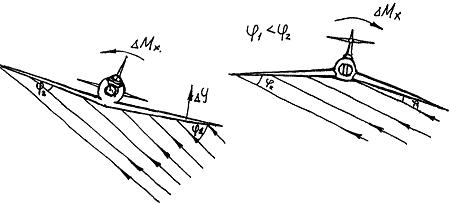
See? With a positive V with raised ends of the wing in the roll, the outer wing loses lift, the inner wing builds up, the roll straightens. For negative V, the opposite is true.

See? With a positive V with raised ends of the wing in the roll, the outer wing loses lift, the inner wing builds up, the roll straightens. For negative V, the opposite is true.
Additional benefit: since the ekranoplane flies above water, we will put floats at the lowered ends.
Secondly, sweep affects stability:
How is it with airplanes 
In sliding, the inner console becomes less swept, increases lift. The outer console is blown at a sharper angle, the lift decreases.
As a result, the swept wing increases the stability of the device to excessive values, which is why many modern swept aircraft have the opposite V.
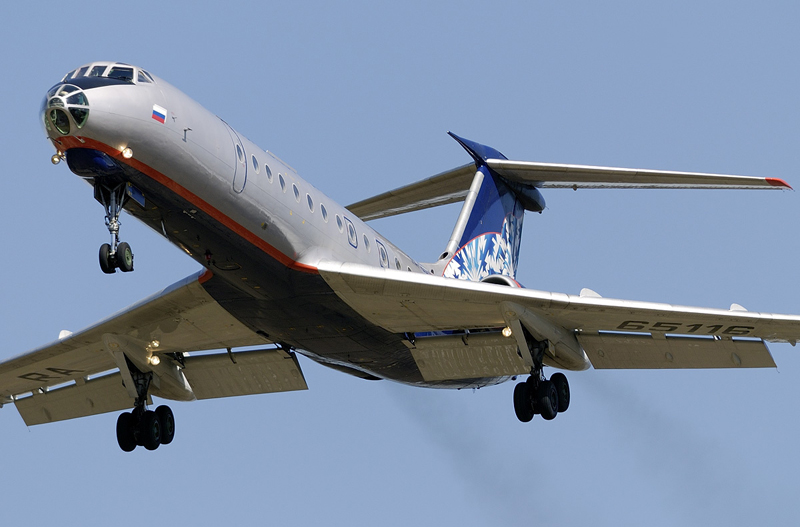

In sliding, the inner console becomes less swept, increases lift. The outer console is blown at a sharper angle, the lift decreases.
As a result, the swept wing increases the stability of the device to excessive values, which is why many modern swept aircraft have the opposite V.

To further reduce excessive stability, we sweep backward .
Thirdly, to reduce the throwing of the CD along the wing in rolls (and when flying over irregularities), we will reduce the role of the outer part of the wing, we make a large narrowing , almost a triangular wing.
And finally: the speed is small, the wing is triangular - you can use a very large angle of attack . It will not just make flying easier. The trailing edge practically falls on the water, preventing the air from escaping, and during acceleration a dynamic air cushion is obtained to assist the ascent.
The result is a Lippish scheme

Lippisch, a German aircraft designer, having worked after the war on the American fighter program, took up ekranoplanes. As a specialist in triangular wings, he naturally came to this scheme, releasing the famous X-112 in 1963:

Later, the engine moved to a more convenient place, it turned out X-113

- and popularity has come.

To summarize: we got a very safe low-speed car for pokatushek. Slow, 60 km / h, at a limit of 120. The main advantage in the ability to fly very safely together on an engine 25ls. Cheap engine, cheap design. Own mass of the device is less than 200 kg - and this is the cost.
X-113 variants still have enthusiasts, although the accessibility of more decent engines and high-quality materials has affected their quantity badly. Light aircraft became available to many, and this is a completely different league.
The scheme does not actually scale; with increasing speed, the decisions made turn into their opposites.
Note that the commonly referred to super advantages in the form of increased carrying capacity and range are out of the question. The range parameters for these ekranoplanes are practically not indicated, why is it in pokatushki?
But there is another way
The path can be called a force: for each specific problem, a specific force decision is made.
- Sustainability issues? Large stabilizer;
- Should the wing be wide? Yes;
- Does the long wing interfere with bends and bumps? Will be short;
- Is it hard to take off? Additional engines operating only on takeoff.
I think the written sounds rude and insulting, as if invented badly. But no, it’s thought up just fine, you need to understand why. Design Bureau of Rostislav Alekseev did not make a car for tourists, but for the military, they are of little interest to cheap safe pokatushki.
Work on military ekranoplanes began approximately at the same time as the work of Lippisch, in the early 1960s. The main advantage was the ultra-low altitude, hiding the device from enemy radars and too high speed for surface and submarine ships to prevent them from completing the mission.
The aforementioned direct decisions were made not from the floundering bay, but after studying various options:

First, the “C” circuit was tested, a tandem with two wings. The advantages are obvious, you can fly steadily without large losses. But all the same sharp changes in lifting force showed the unreliability of stabilization. In addition, the influence of disturbances from the front wing to the rear wing turned out to be too large.
Scheme "B" (Lippisch) is not suitable for large and fast devices. And the work focused on option "A", the classic scheme with a direct wing, stabilizer and accelerating engines.
The first experimental was SM-1:

Then there was SM-2, the go-ahead was received and the development of immediately the largest, one might say, huge, KM was started:

No wonder he got the nickname "Caspian Monster." The size was not so random: it was necessary to fly over the sea. There are waves at sea, and there are high ones. Okay shaking, you can just fly into the wave! So you need to fly high. But I also want to quickly, but the car is military.
But the higher and faster we fly, the weaker the screen until it disappears. It remains to make the wing wider, which means that the entire apparatus is larger. The take-off mass reached 544 tons, only Mriya took off much later in greater weight.
Having become huge, KM got the problem of large seaplanes: it’s hard to break away from the water, it holds. Moreover, the wing for such an apparatus is small. That is why a whole engine battery appeared in the nose. They do not just turn on at take-off, their jets are directed downward, under the wing, creating a dynamic pillow during acceleration and separation from water.
In flight, the accelerating engines are turned off, the main engine remains in the tail.
It was supposed to be an incredible missile carrier, invisible to radar, very fast for the sea and with a large supply of missiles in comparison with aircraft.
A good option to deal with aircraft carriers? Alas, too huge, too dependent on the weather. In addition, the flight range was surprisingly small. However, the KM was a huge but experienced machine with natural flaws. Further steps were needed.
After optimizing for most parameters, it was possible to make a classically beautiful, much more economical “Eaglet”. Appointment - fast transportation of landings.

He is so beautiful that I will not deny myself the pleasure of showing a diagram:

The main engine became turboprop, which corresponded much better to flight speed and was more economical. Accelerating motors hid in the nose fairing, and all the contours became more aerodynamic.
The car turned out to be more successful, it went to the series, the 11th separate air group was formed:

In parallel, a new version of the KM was created, a missile carrier called "Lun":

But the matter did not go beyond the scope of tests and experiments, with the expansion of flights almost all problems of ekranoplanes came to light. The case lasted until the 90s and relatively quietly came to naught. In this way, despite the groans of fans and conspiracy theorists, simply no advantages were discovered and multiple shortcomings were discovered. No matter how you try, no matter how you make a technically perfect machine - the principle itself has summed up.
Finally, radar crosses were put up on military ekranoplans. Cruise missiles appeared, new dangerous targets, and locators capable of tracking them appeared. The ekranoplanes immediately ceased to be something secretive. The speed and range of the missiles made the speed and range of the ekranoplanes unnecessary. Landing craft also cannot land an ekranoplane on an arbitrary shore; beaches all over the world are suitable for this once, twice, and miscalculated.
So the military idea came to naught.
And yet, let's talk about exploitation. Alas, nothing encouraging was found there either:
Profitability
Does the screen double the aerodynamic quality? But in practice, huge stabilization losses eat up everything. Do not believe?Look above at the "Eaglet" pattern or here at the "Moon" pattern: the stabilizer is comparable in size to the entire wing. And after all, besides the resistance itself, he presses down, spending the very same lifting force for which everything was started.

Compare with the An-12 circuit, what is its stabilizer compared to the wing:

Some quotes with numbers
" , ".
, — , — , — .
, . :
, — , — , — .
| M | ||||
|---|---|---|---|---|
| «-5» | 2,40 | 5.3 | 8.0 | |
| «Cessna-206» | 1,64 | 5,0-6,0 | 7,0-9,0 | |
| «» | 140 | 4,5 | 13.6 | |
| – 74 | 36.5 | 5,0-6,0 | 11-13 | |
| «» | 380 | 5.5 | 14,6 | |
| –124 | 405 | 10.5 | eighteen |
, . :
: «-5» 4- 150-170 /., 32 . .
: 32 // (170 / * 4 ) = 0,047 / *
«-5» 680 - .
- «Cessna-206» 6 265 / 42 . .
: 42 / / (265 / * 6 ) = 0,026 / *
– 1590 - .
, 1 - 1,8 -, — 2,3 .
You can, and very briefly: compare the "Eaglet" with the An-12 (which is 25 years older and certainly not more advanced technologically or based on materials). The transported cargo is the same, but the An-12 is faster, three times lighter and many times more economical. The reason also lies in the fact that the plane rises to where the density (and resistance) of air is lower, and the ekranoplan plows the densest part of the atmosphere.
As you can see, the use of the screen does not bring any real benefits. And that, alas, is not all.
Weight
WIG - a very heavy vehicle. The requirements for the strength of the casing in terms of landing on water are high. The structural strength requirements due to the constantly moving CD are high. It turns out shipboard strength requirements for aviation requirements for technology and materials. Very, very expensive.
In addition to the actual design, the engines also weigh. Accelerators must be "carried free" the entire flight. It is necessary to maintain, replace, repair. Engines are generally the most expensive part of the aircraft; in the case of ekranoplanes, the problem only worsens.
Corrosion, engines
The ekranoplane flies low, and this is dust near the earth and water above the sea. Engine wear is accelerated many, many times. In winter, icing will be simply murderous, marine:

“Alekseev's ham”
The flight height of the ekranoplanes coincides with the flight height of the birds.

Even the military needs to take care of the engine, you see - they put protective nets:

But for civilian cars this solution is not acceptable, the recent story with gulls in Zhukovsky is indicative.
River ekranoplanes also have problems: the rest of the participants in the movement are much slower, but it will not work to dodge them or fly safely. Hydrofoil vessels have a similar problem, but they are still much better managed.
Modern projects, an attempt to evaluate
Nevertheless, the idea of ekranoplanes continues to excite the minds, and there are many attempts to revive it. In anticipation of the war in Iraq, they considered the Pelican ocean-based ekranoplan project :

It is easy to see that this is not an ekranoplan according to the scheme, but it doesn’t look like an effective aircraft either. It is difficult to say how much the project has worked in Boeing, but apart from the hippo giraffe, I will not name it. Maybe they hoped that the size (take-off weight of up to 1,500 tons) would help to escape from problems, but ... I do not believe it.
Quite a lot of attempts have been made and continue with us. There are three directions:
“Big Lippies” or hybrids according to the aerodynamic scheme, for example, S-90:

The point is to get away from very large losses in a very straightforward Alekseev scheme. But the whole appearance shows high speed, and what then is a screen without huge sizes? The sketch remained a sketch.
“Little Alekseevs”
“Aquaglide 2” (photo by Stefan Richter)

Here you can see, rather, the hope of ease of development, without aerodynamic frills. Although the idea of blowing under the wing at take-off is realized through rotary screws - this is not about simplicity.
Since the need for stabilization, including the transverse one, is only exacerbating in a small amount, I would not dare to ride Aquaglide.
Ekranoleta
Once the problems are on the screen - why not fly away from them higher? Indeed, even the heavy classics of Alekseev were able to rise to a height of two (!) Kilometers. Of course, with such a wing and mass it was a one-time jump, no flight of fuel would be enough to fly.
But it’s tempting, after all ... maybe to add an airplane wing? Even in screen mode, the aircraft wing behaves more stable, and when jumping over obstacles it will help at all.
It turned out, as in the German phrase with the word nicht at the end:
- All problems of ekranoplanes remain, because they are solved not by the wing, but by the stabilizer;
- Flying at altitude did not become economical, the heavy and incorrect pancake of the screen wing resists;
- Coordination of the work of the “screen” wing and the “aircraft” requires elaboration that no one does, they simply set standard profiles;
- Two wings - two prices, everything becomes only more expensive.
But the opportunity to beat out a grant for a beautiful idea, and even a little more volatilely named one, is captivating, it’s easy to find examples:
Project S-90-200:

“Oriole EK-12P”:

They are built and even fly:
Let's look at VVA-14, the Oriole, the EKIP, the Oriole, and the same Pelican - the same thing, an airplane wing.
Not randomness, but patterns
Accidents and disasters in aviation, alas, is not news. But the development lies in the fact that the reasons for them are eliminated. In the case of ekranoplanes, alas, everything remains. The problems and dangers common to all ekranoplanes have not disappeared, it is worth blowing the wind, and:
Nothing exceptional - it is the classical behavior of the ekranoplan that is available. Similar problems arose with SM-5, and with KM, and with Orlyonok :
… “” 1992 . 2- , “” 4 370 /, “”, . . .
“ ”, 1980 .
“ ” — -5 ( 100- 1:4), 1964 . “ . , , ”.
“” 1972 . , -12. , , - , .
I’ll mention a couple of legendary projects, which are talked about a lot, and which, fortunately for their creators, were not completed:
RL Bartini, “VVA-14” (photo by User: Jno - Open Museum):

A very romantic, very popular and very adventurous aircraft designer Bartini tried to make a super improbable device right away. It was supposed to be a high-speed plane with a screen and also with vertical take-off. Based on the known experience of vertically flying planes, the project is
Schukin, “EKIP” (photo by the EKIP concern):

There is no vertical take-off, but the disk flying wing has been piled up in heaps, and its enormous size (without providing screen specifics), border layer management (as if this automatically eliminates stability problems. It didn’t save anyone, but here it will be, yeah).
Technically, discussing this is generally impossible.
Conclusion
Literally all the demonstrated projects do not solve anything, stupidly parasitizing on the old idea.
But the situation can be improved. The ekranoplan’s problem of stability means that computer stability is needed. This gives aircraft significant, ten percent, savings, and it can simply save an ekranoplan. Not only will the dangers be eliminated, stabilization costs will fall at times.
Yes, it will be a high-tech and expensive device, but it will be able to fly. If you also apply the electric or hybrid scheme of the propulsion system, it may be possible to solve the corrosion problems. Although, of course, the erosion of propellers, birds, boats, and especially yachts with their high masts - will not go anywhere.
UPD:
I missed to describe a niche in which the ekranoplan could be very successful. Of course, subject to a high-quality apparatus made of composites (corrosion, weight) with computer resistance (safety, efficiency).
This niche is Southeast Asia, including Japan. There is a lot of sea, the distances between the islands are small, so the plane barely manages to rise to the train, as it is time to descend. Large passenger flows (the size for the ekranoplan is good, you can fly higher and faster).
But alas, this niche is purely theoretical and, I am afraid, will never open.
Firstly, there is no desired ekranoplan, not even a movement in this direction is visible. And it will not be, because such a development is very expensive and hardly anyone can do it for a niche.
Secondly, even if the planes are not ideal for these conditions, but they are there, there is all the infrastructure, everything is massive and therefore extremely inexpensive. To occupy a niche, you need not just to occupy it, but to squeeze out an already working system from there. Which, of course, neither the "watermelons" nor the "bobiki" will do.
UPD:
Corrected the text in the spoiler about the nonlinearity of losses. I hope now it’s more correct and understandable.
All Articles